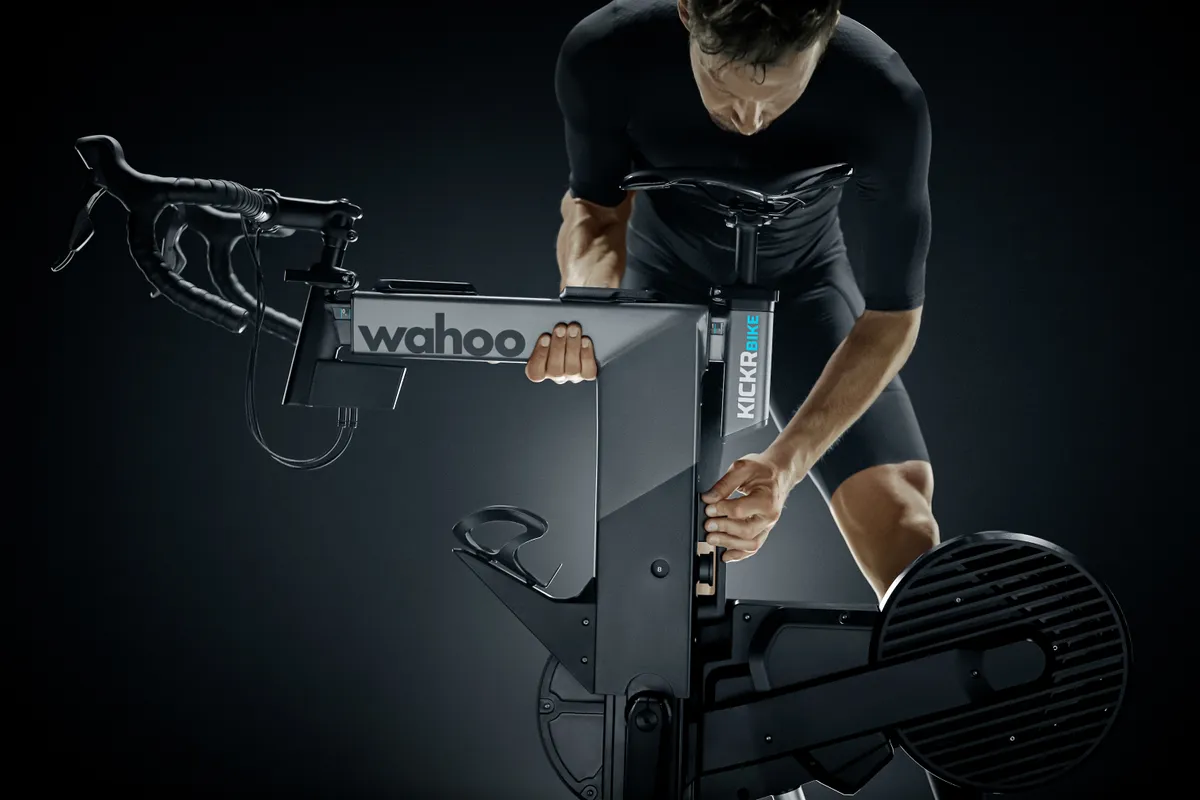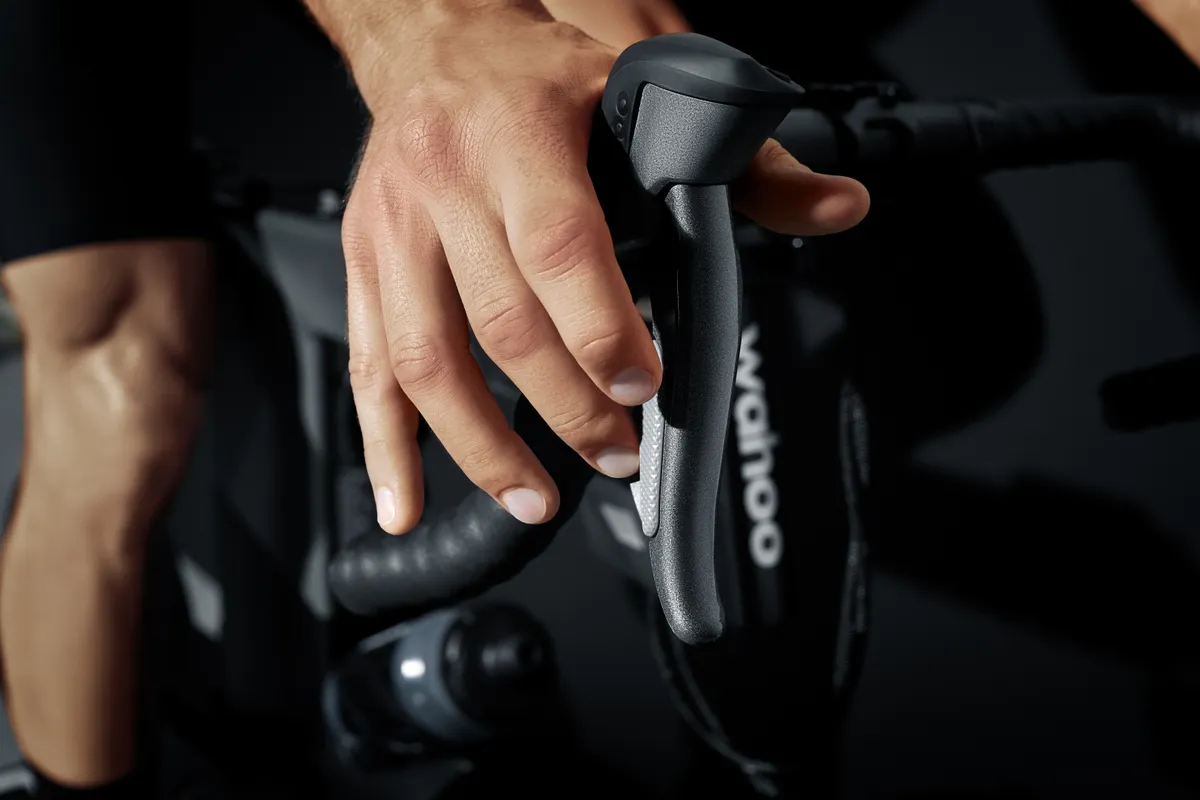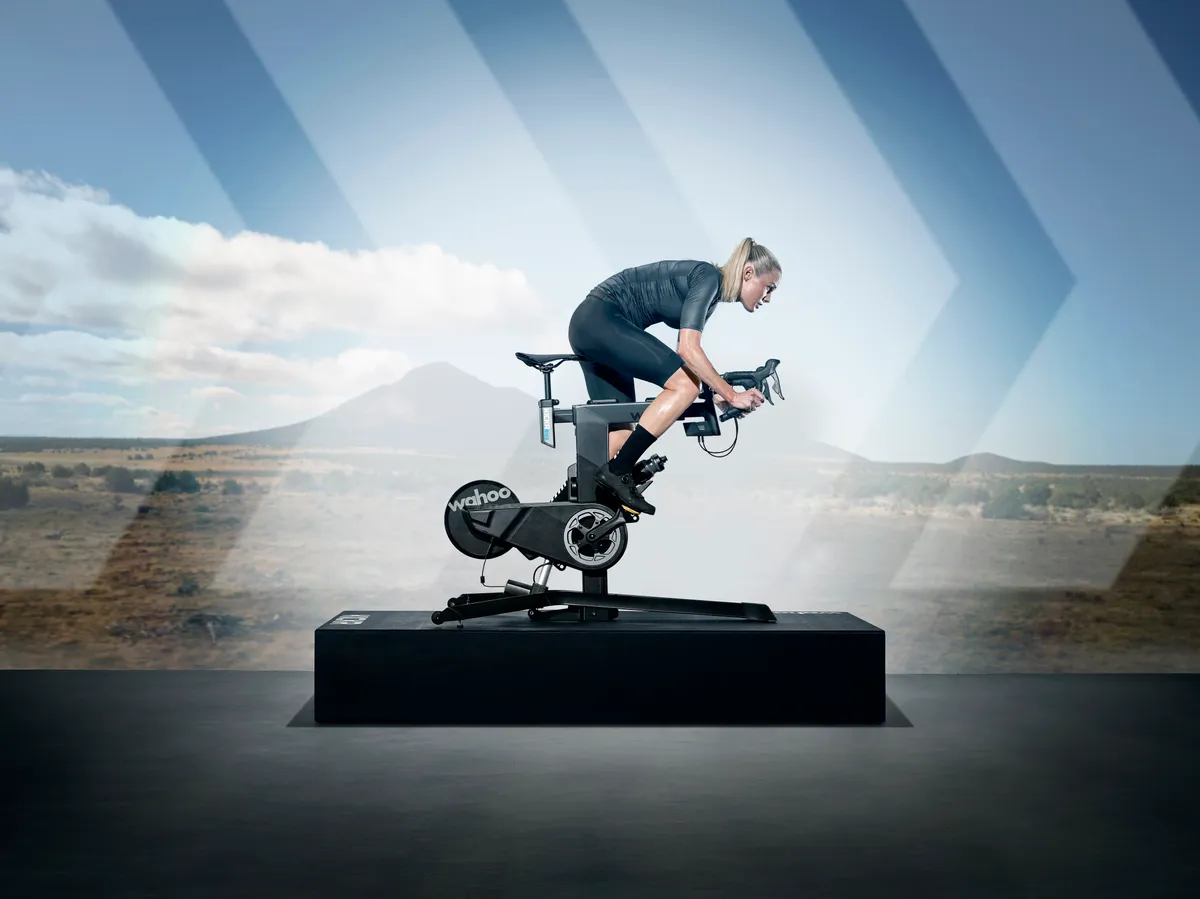The hugely customisable Wahoo Kickr Bike is the brand’s first standalone trainer and, at $3,500 (international pricing TBC), is also the most expensive indoor training bike on the market.
The new Wahoo Kickr Bike features integration with popular bike fit programs, in-built incline simulation, front and rear braking, bike-like shifters and all of the connectivity you’d expect of a modern trainer.
With its premium price, Wahoo is pitching the Kickr Bike as the “ultimate product for discerning, data-driven athletes who are ready for a feature-rich, top-quality, responsive, dedicated indoor bike as the new cornerstone of their fitness.”
Wahoo Kickr Bike key specs
- Full ANT+ and Bluetooth Smart control and connectivity
- Maximum resistance of 2,200w
- 13lb flywheel
- +/- 1% claimed power accuracy
- 165mm to 175mm crank lengths
- Integrated grade simulation for both climbs and descents (20% up, 15% down)
- Front and rear braking
- Customisable shifting, chainring and cassette profiles

The guts of the Kickr Bike are based on the brand’s existing smart trainers — a 13lb flywheel with electromagnetic resistance control is driven by a belt-drive, which is connected to a set of funky webbed cranks.
These cranks have six different pedal holes. These allow you to switch between crank lengths ranging from 165mm to 175mm.
Beneath the chaincase is the motor that controls the pitch of the bike. This unit can simulate a climb of up to 20 per cent upwards and descent of -15 per cent.

We saw a similar technology released with last year’s Kickr Climb, though the Kickr Bike changes the angle of the bike from the centre of the bike, rather than the front.
Upon delivery of the bike, users are guided through the assembly process via videos and instructions that are integrated into the Wahoo app. The total time for assembly is claimed to be less than ten minutes.
For dialing in fit, you are able to upload a photo of your bike to the app, which will determine the approximate fit for your Kickr Bike.
It is also possible to import fit measurements from Retul, Geru or Trek’s bike fit systems to the Wahoo app. This will then convert the fit into measurements that can be adapted to work with the Kickr.
All five of the bike’s contact points are adjustable, and you can also fit the saddle of your choice.

The shifters — which look like a weird Sramcampagmano mashup — mimic the function of regular road bike shifters. This is a big departure from the more typical simple buttons that are seen on competitors’ indoor training bikes.
The buttons on the top of the shifters are used to manually adjust the incline of the bike. The two buttons on the inner face of the shifter body are used for steering (perhaps suggesting that Zwift’s steering functionality may be rolled out more widely in the future).
The shifting paddles themselves can be customised to mimic the shifting system of your choice.
It is also possible to customise the virtual gearing of the Kickr Bike to mimic your normal bike — whether you use 1x or 2x drivetrain, an old-school super-close cassette or a wide-range monster, you can accommodate pretty much anything in the app.
As you would expect, the bike has full ANT+ and Bluetooth connectivity and will work with all popular indoor training apps.

Wahoo’s heady claim that the Kickr Bike “blurs the line between the indoor reality and an outdoor experience” deserves scrutiny — you are, after all, still just pedalling a static bike indoors.
However, there is no doubt that with the ability to so closely mimic the fit of your ‘outdoor’ bike — right down to the shifting functionality and gear profiles — indoor training bikes are closer to the real thing than ever before… at a price.
A limited number of Kickr Bikes are expected to be available in selected territories this October, with full availability in early 2020. Full international pricing and availability is still TBC.
